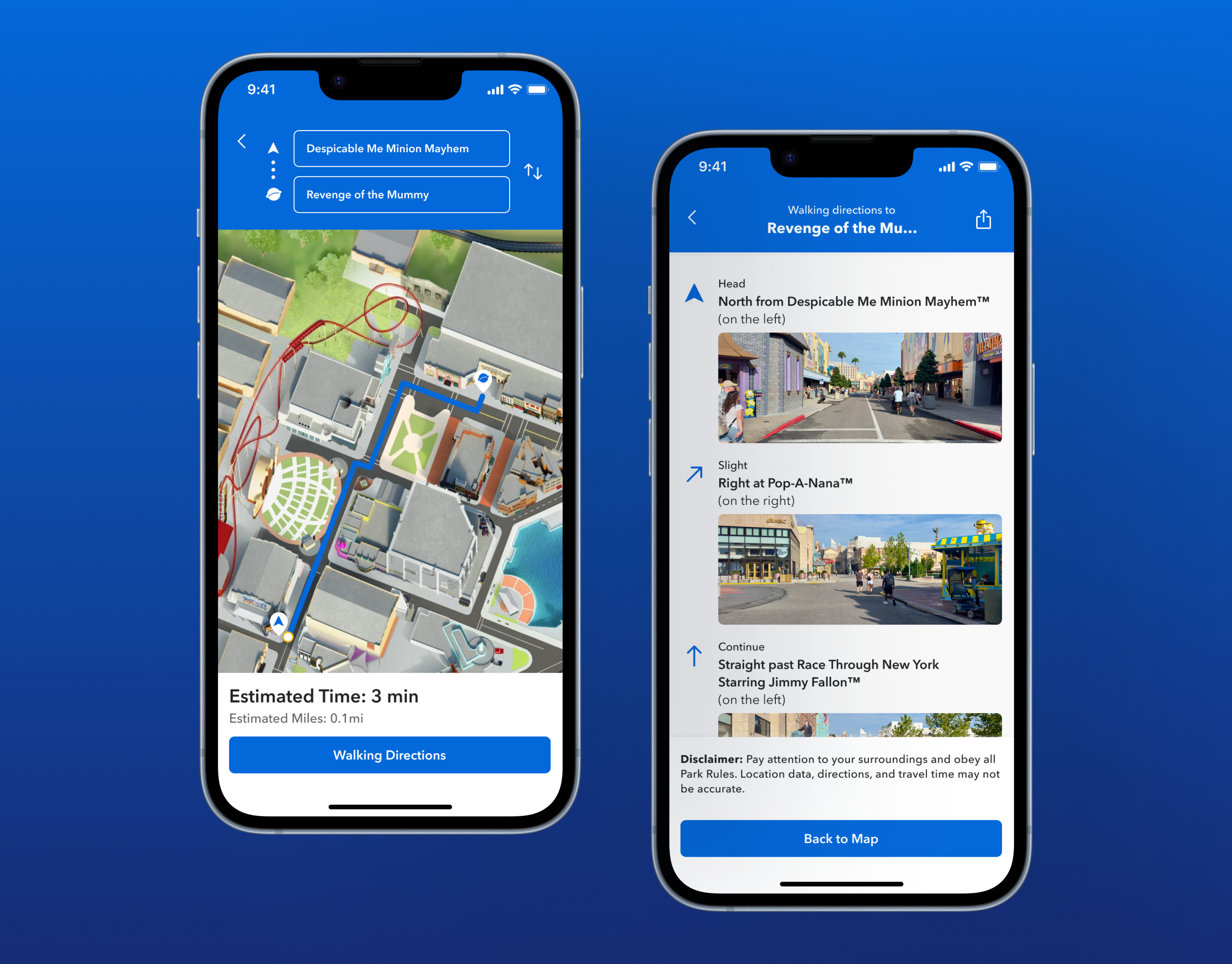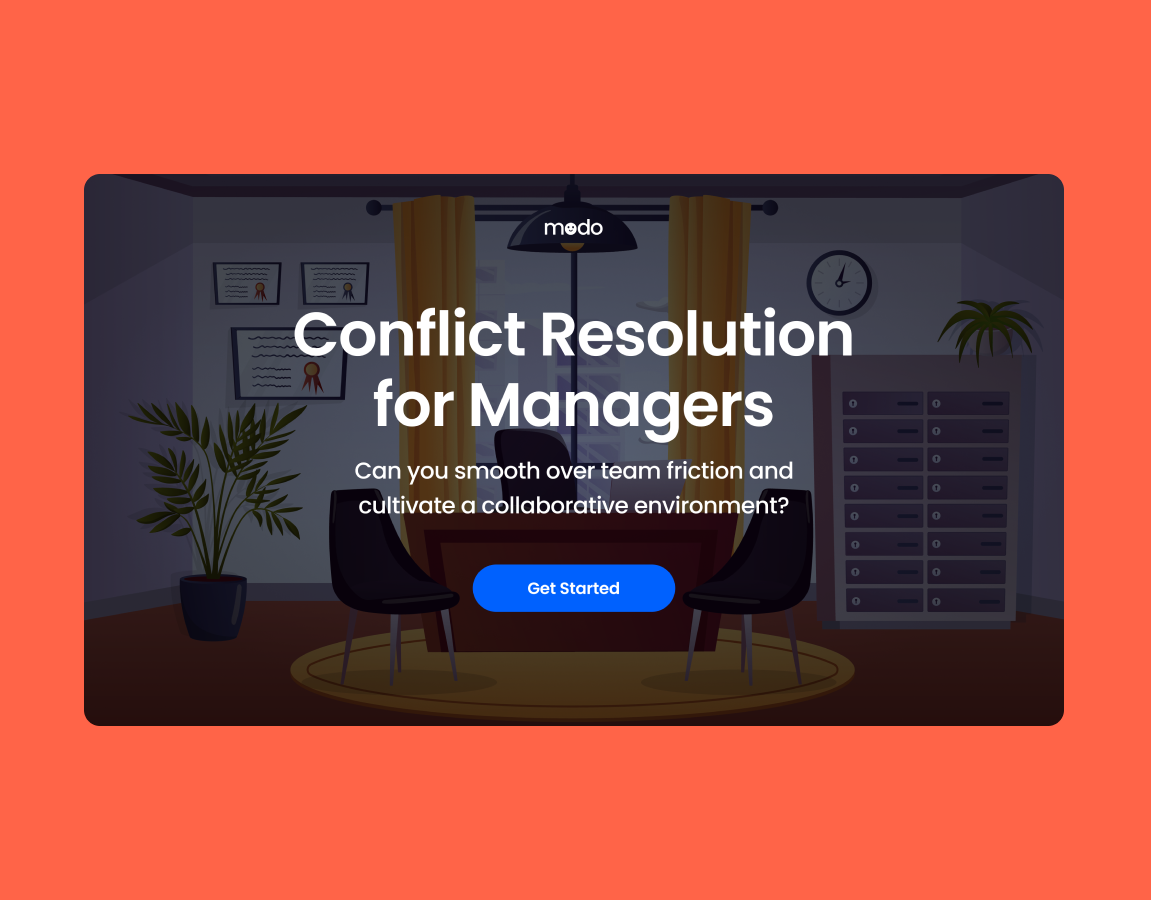Conflict Resolution for Managers: Supporting Tools
To extend learning beyond the e-learning course, I designed a facilitator-led PowerPoint for in-person or virtual training sessions, along with a printable takeaway guide for on-the-job reference. These tools reinforce key strategies for resolving conflict and give managers practical prompts they can use in real time.
Responsibilities
Visual Design, Instructional Design, Content Strategy, Content Design
Software Used
Adobe Illustrator, Adobe Photoshop, PowerPoint
AI Used
ChatGPT
Duration
1 Week
e-Learning provides the foundation—
But real growth happens when people get a chance to talk, reflect, and practice together. This follow-up experience was created as a companion to the Conflict Resolution for Managers e-Learning module. It gives managers the opportunity to explore what they’ve learned in a live group setting, facilitated by HR, and reinforces those strategies with a printable takeaway they can bring back to the workplace. The goal? To help managers feel more confident, not just informed, when navigating conflict on their teams.
🧠 The Purpose
This project wasn’t about revisiting the e-Learning content, it was about extending it. While the module introduces key actions like initiating private conversations and using active listening, the live session offers a space to apply those tools in discussion. Participants get to reflect on their own conflict habits, hear from peers, and explore real scenarios in a guided, low-stakes setting. The takeaway guide serves as a post-session support tool; quick, clear, and practical enough to actually be used.
🎯 How I Approached This
Unlike the e-Learning module, which required deep strategy and scenario planning, this part of the project came together more organically. I already had the tone, learning objective, company branding, and core behavior shifts locked in, so my focus shifted to extension. My goal was to support application, not repetition.
The ILT deck was designed to spark discussion, not deliver more content. It needed to feel safe, approachable, and flexible enough for real conversations. The takeaway guide, on the other hand, was about practicality, something a manager could glance at minutes before a tough conversation.
From there, I made every design decision based on what would feel useful in the real world:
✏️ Design Priorities
1. Keep it aligned with the core learning goal
2. Make it simple, calm, and approachable
3. Focus on real-world usability
👥 Instructor-Led Training (ILT)
The ILT session is a 60–90 minute class designed for small groups and facilitated by an HR partner. The structure blends group reflection, scenario-based discussion, and active listening practice. It’s structured enough to stay focused, but flexible enough to adapt to team dynamics and real-time insights.
I designed the slides to feel approachable and calm, using minimal distractions so facilitators could focus on what mattered most: meaningful discussion. This session is ideal for onboarding, leadership refreshers, or anytime a team needs to strengthen how they communicate during moments of tension.
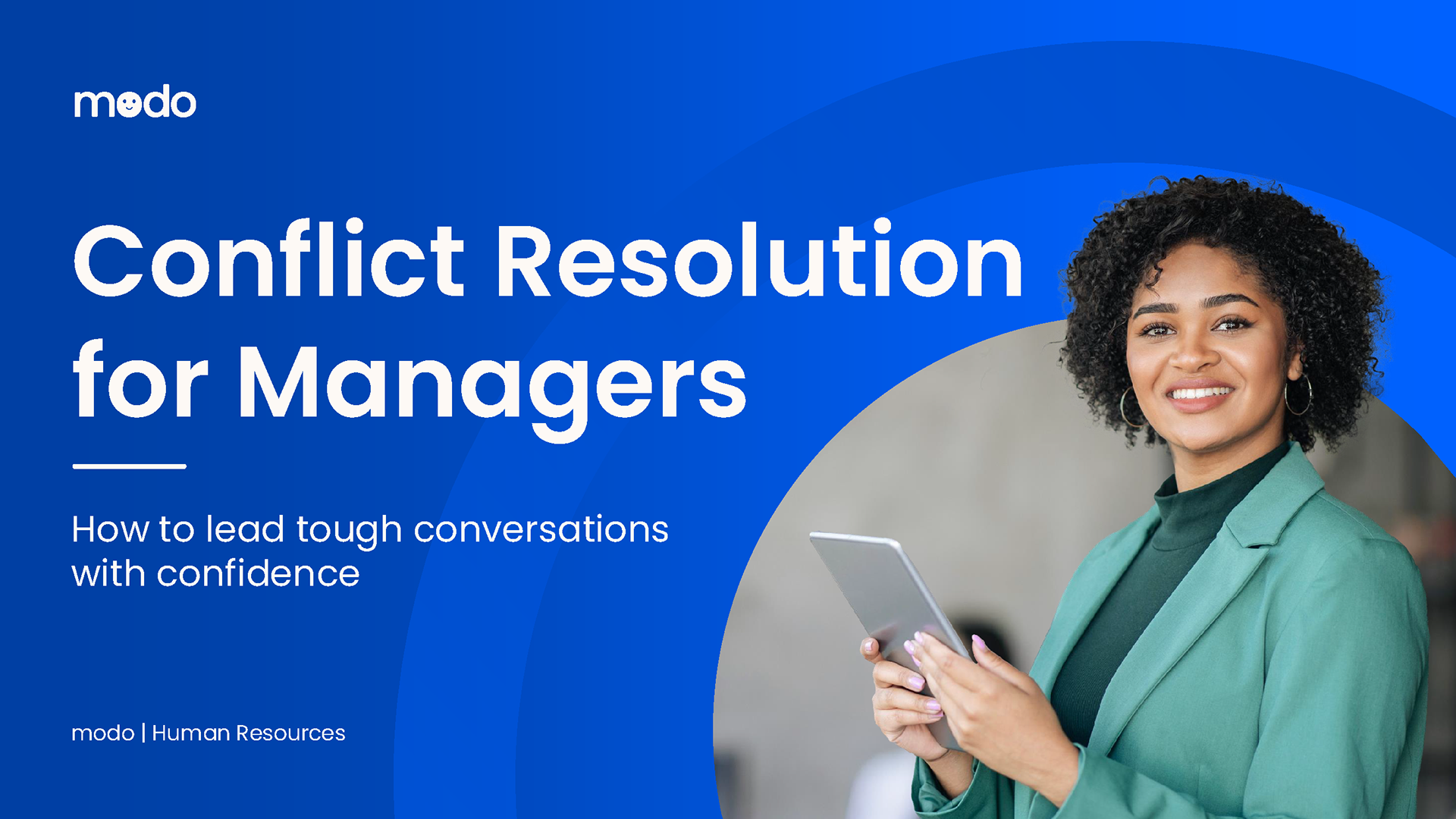
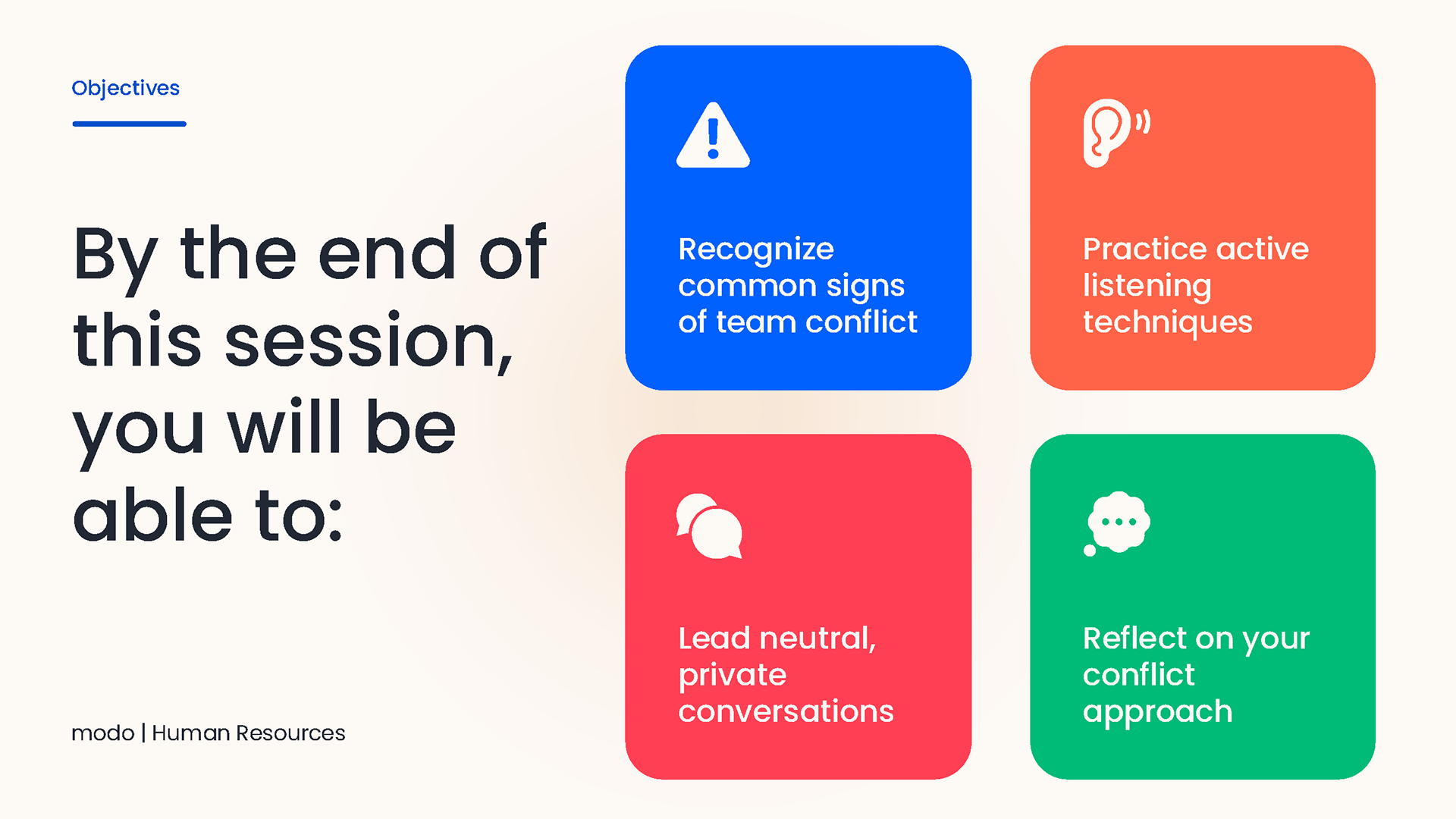
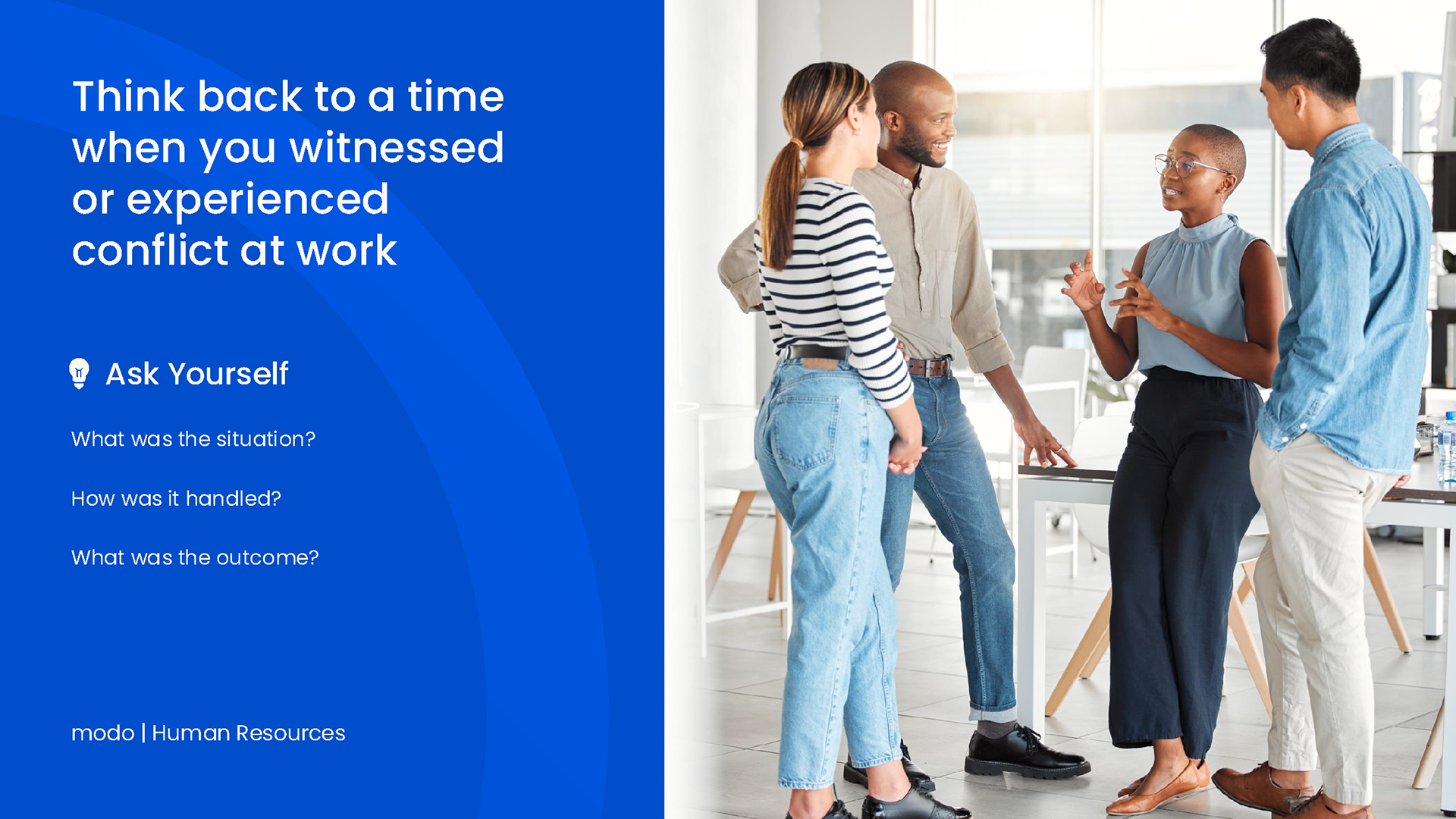
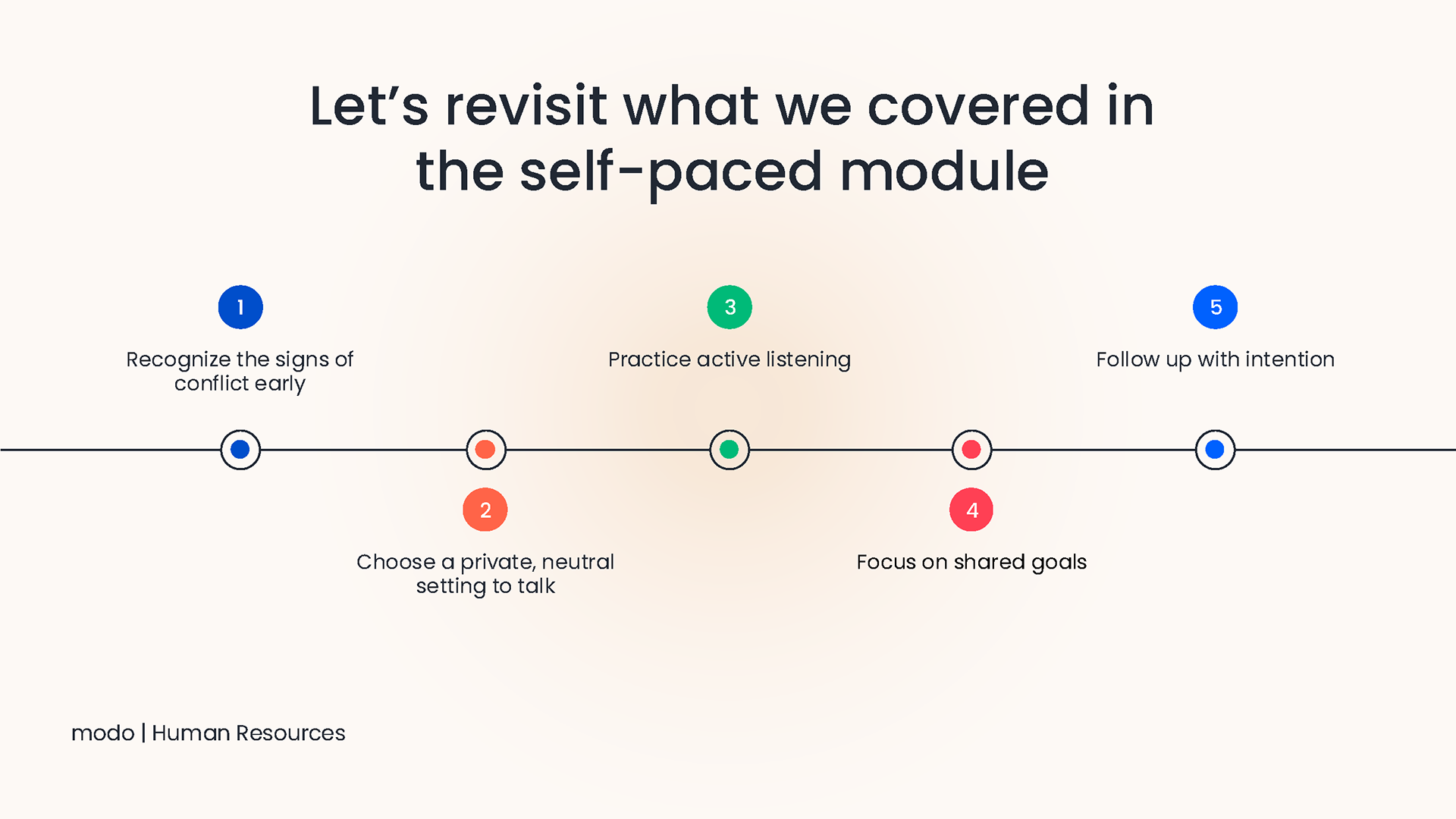
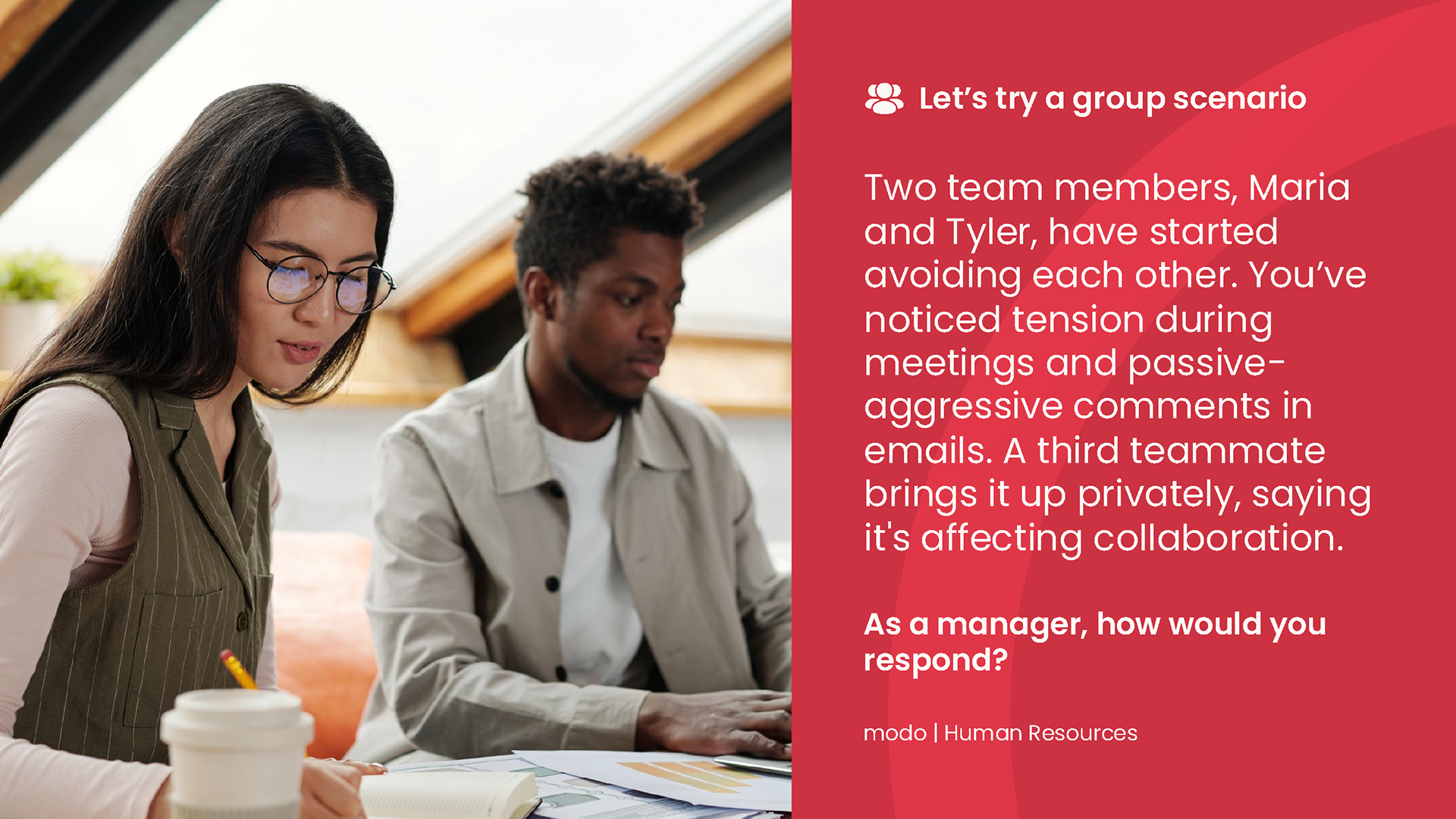
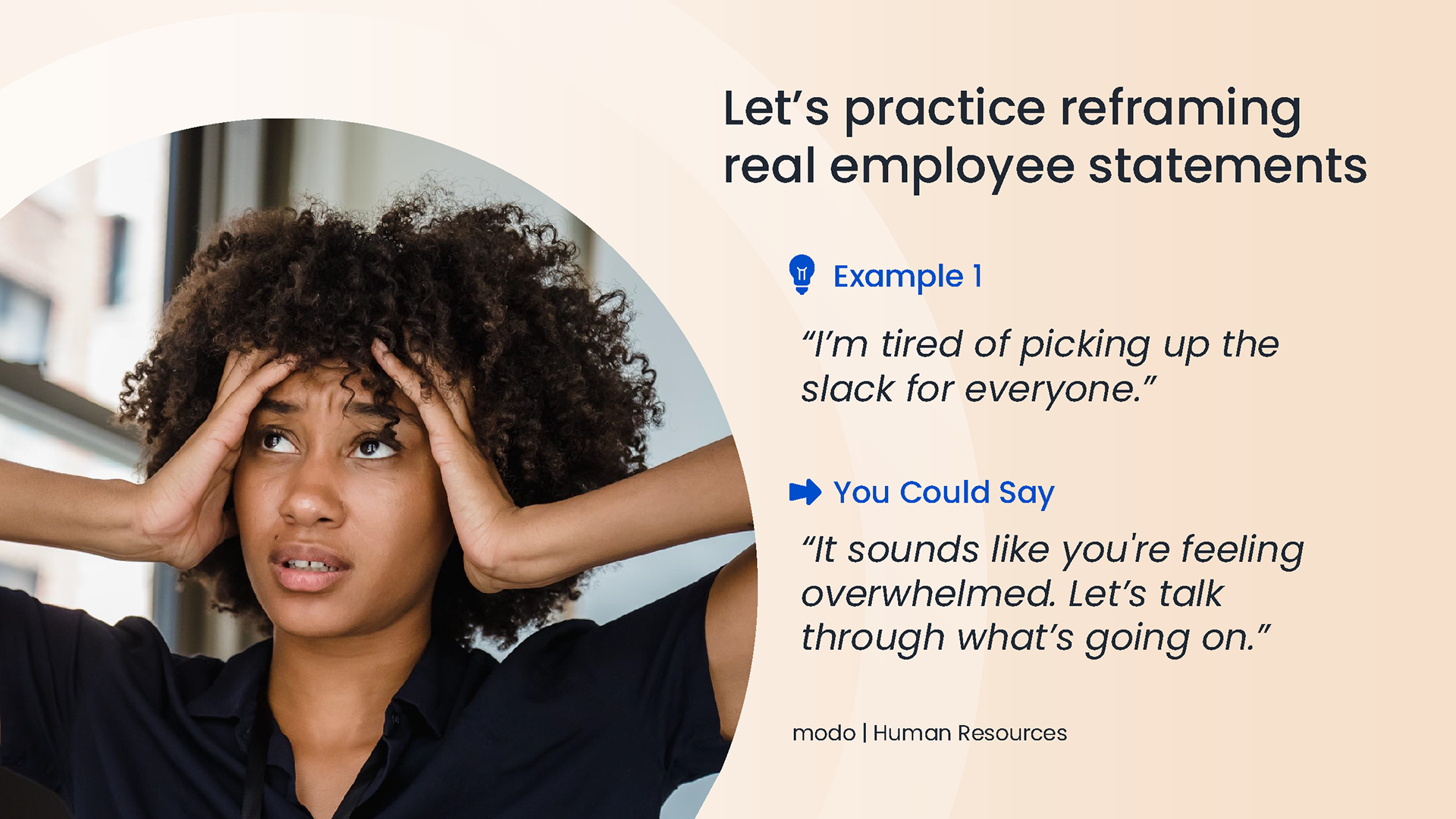
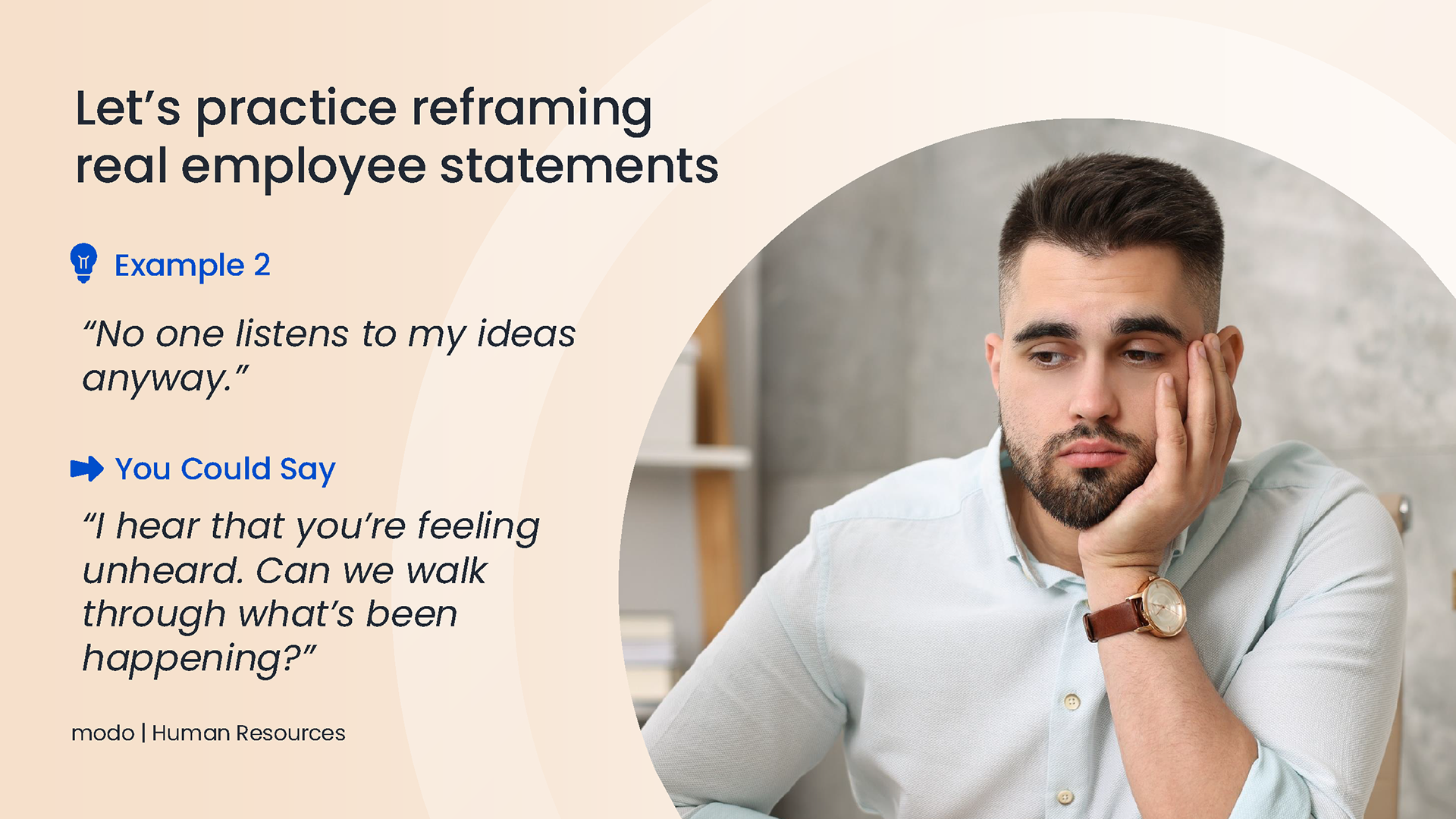
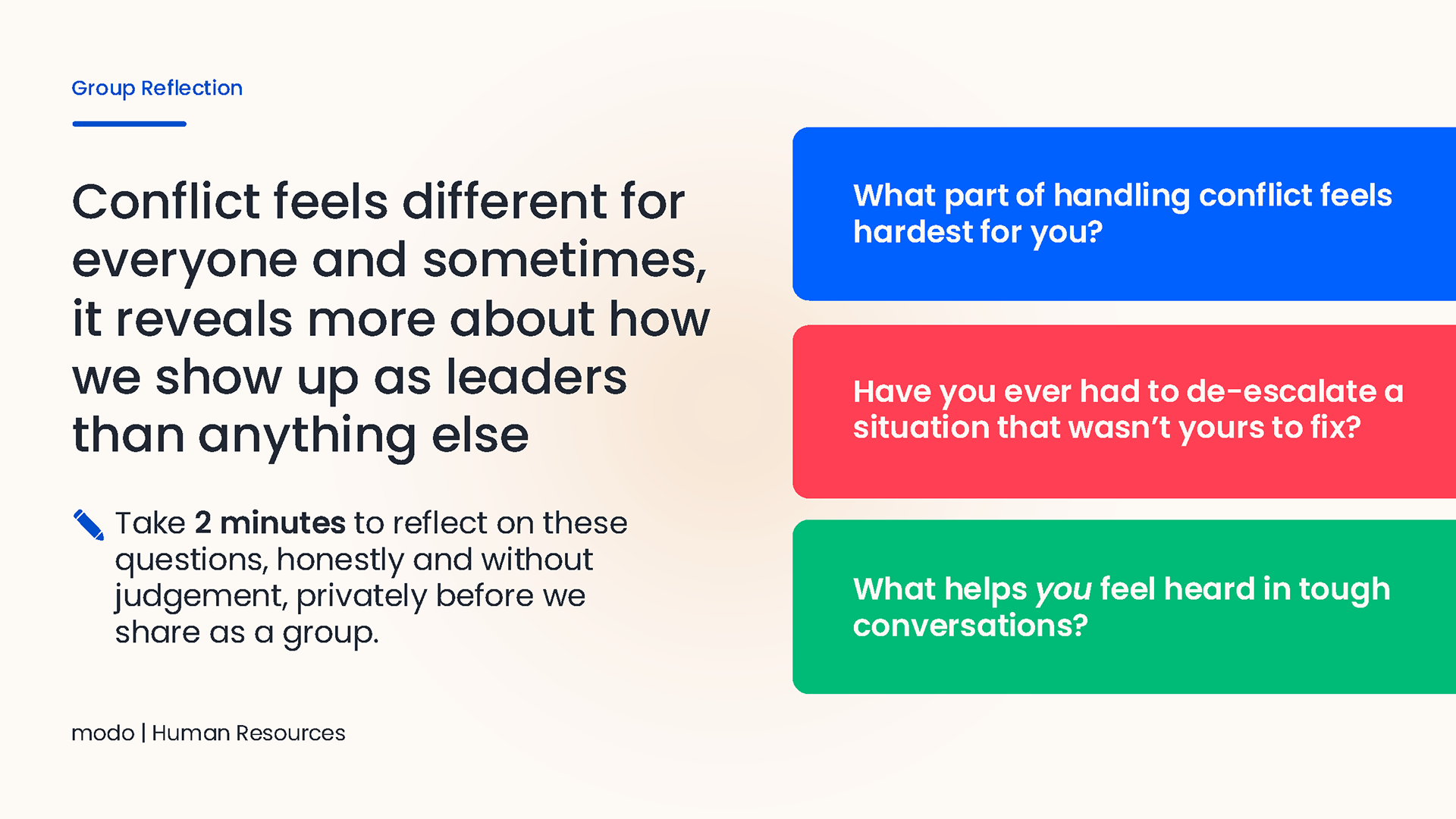
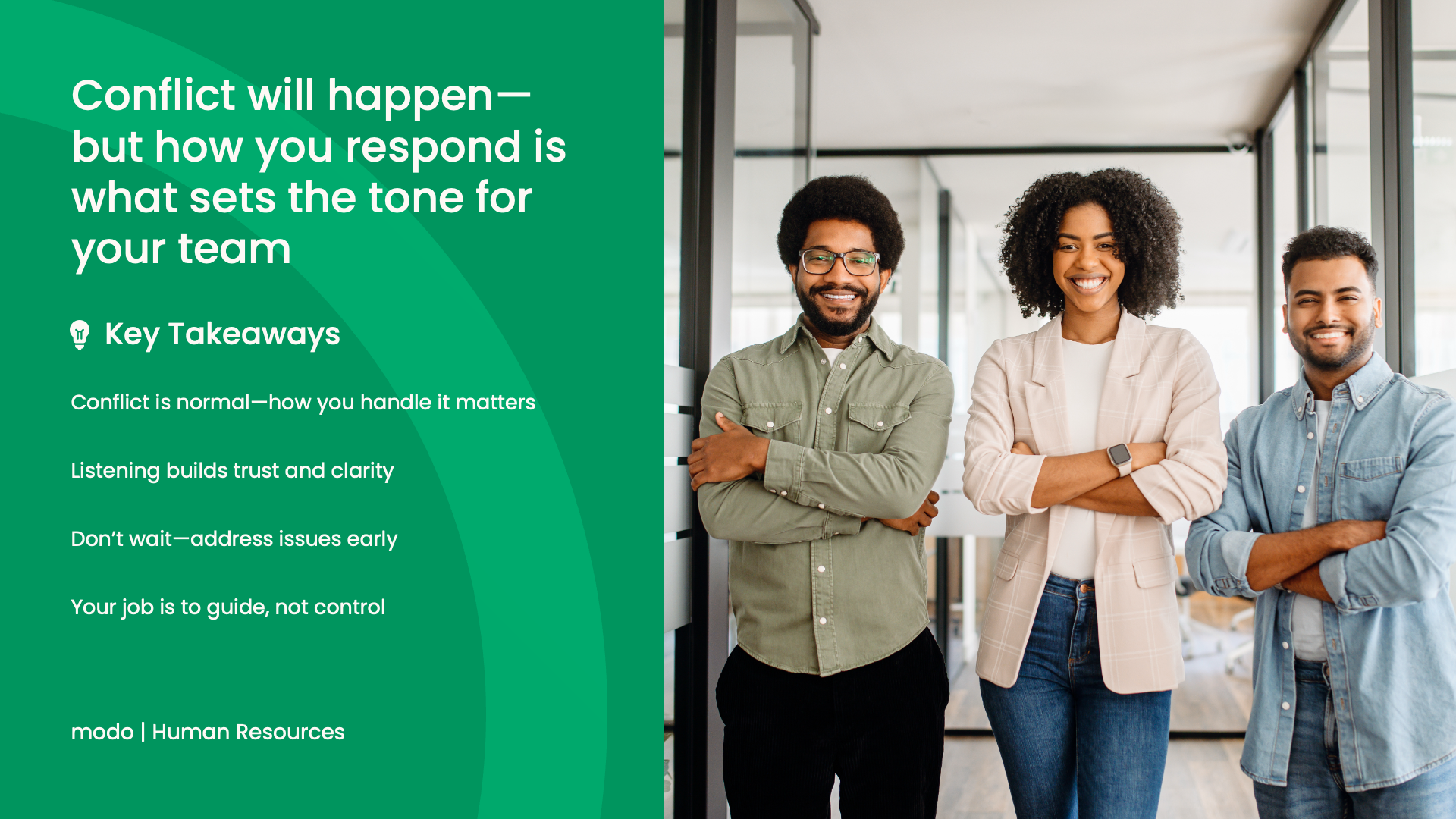
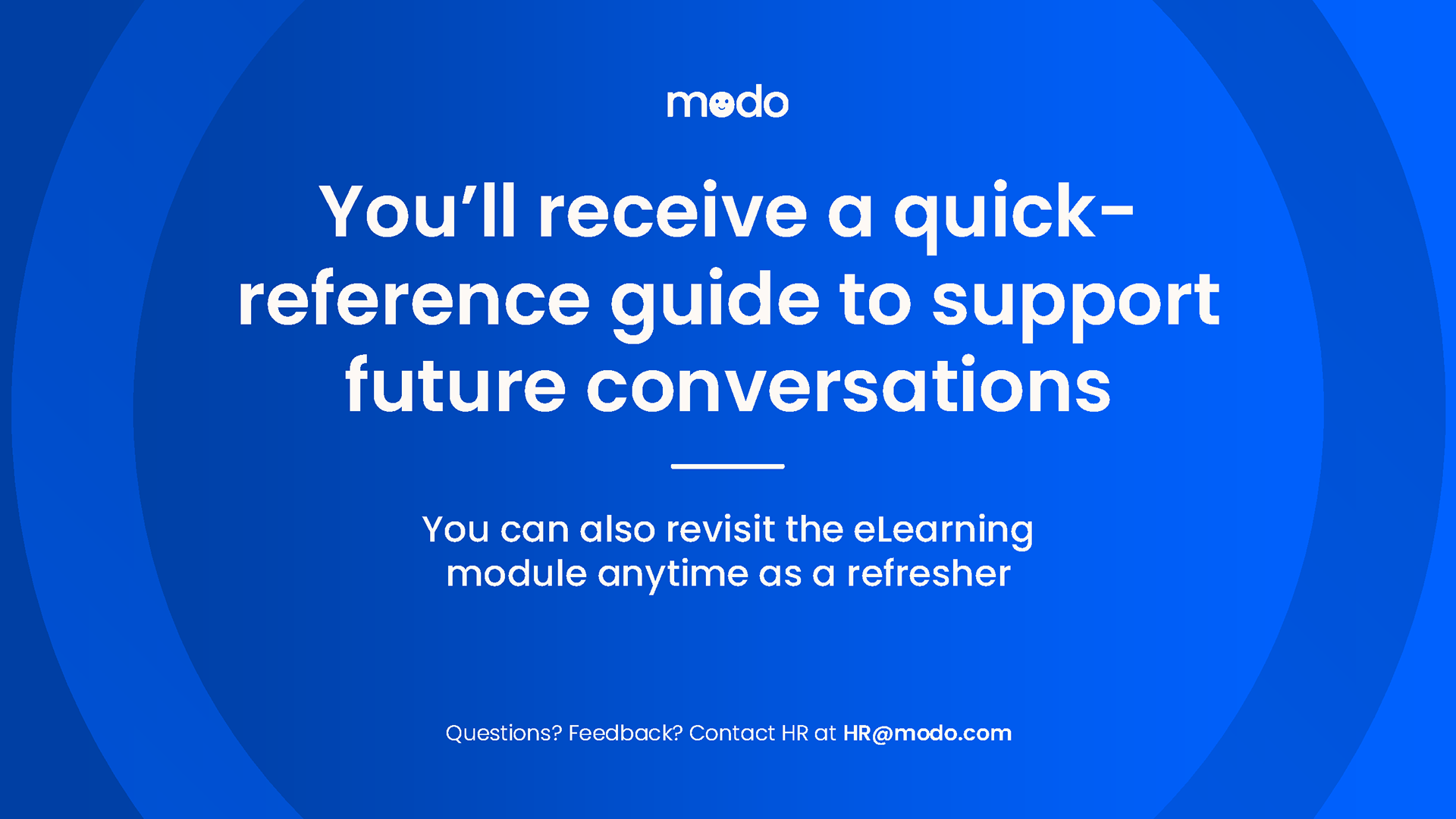
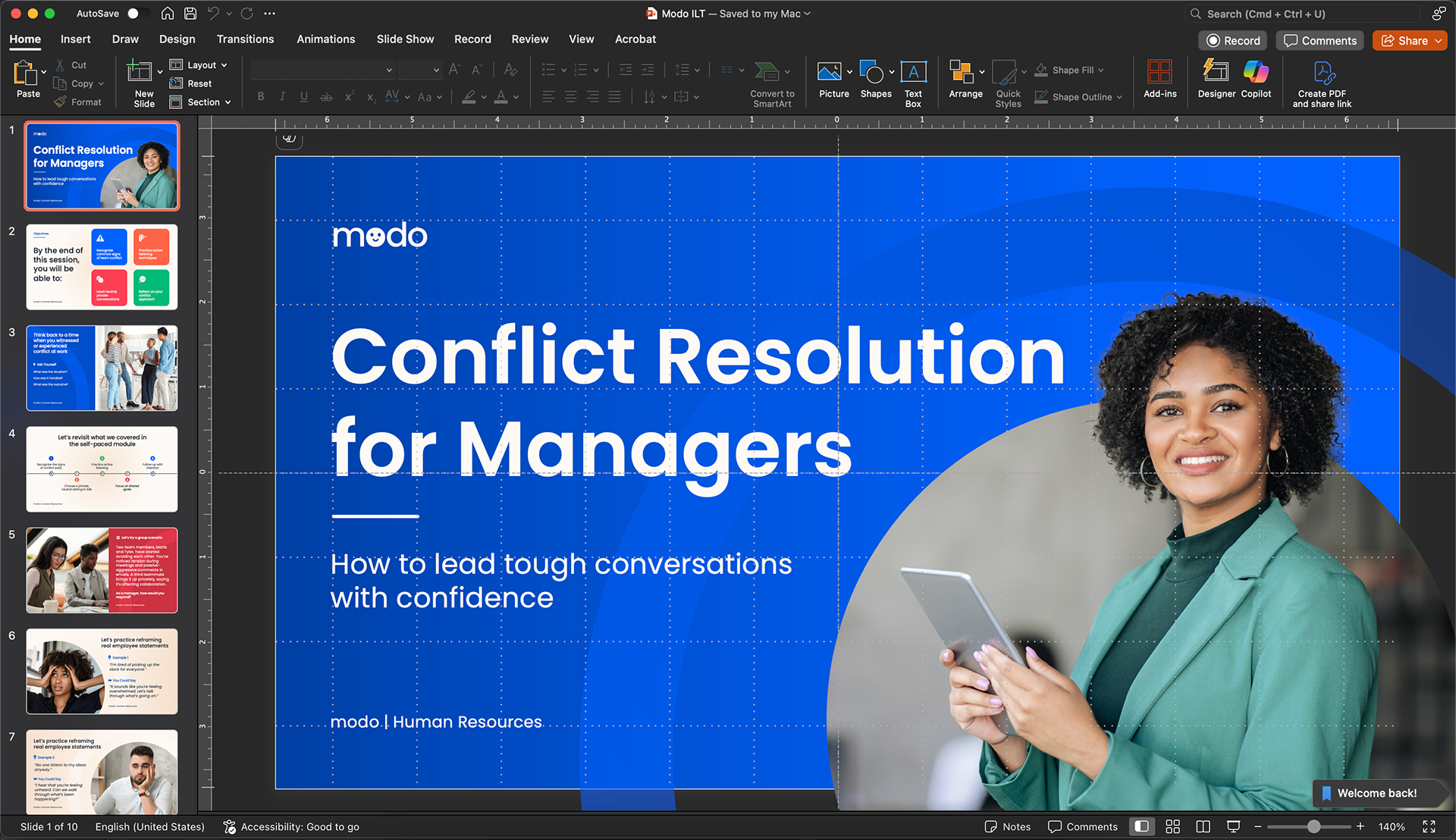
🗂️ Takeaway Guide
The takeaway is a one-page printable guide designed to support managers after training ends. It includes a 4-step framework for addressing conflict and quick reminders that ground managers in empathy and clarity. I designed it to be visually clean and easy to scan, something that could realistically sit on a desk or be pulled from a drawer right before a tough talk.
While simple in format, it’s intentional in tone. The language was written to encourage, not overwhelm, the manager who’s about to walk into a conversation they’d rather avoid.
💡 Why This Matters
Conflict doesn’t follow a script. It happens in real time, with real emotions, and the managers who face it often feel like they have to figure it out alone. This project adds structure, guidance, and reassurance to those moments. It shows that support doesn’t stop at the end of a course.
Sometimes, the most valuable learning tools are the ones that show up when you're about to knock on someone’s door and say, “Hey, can we talk?”

